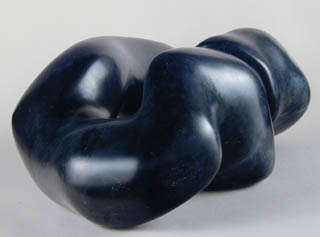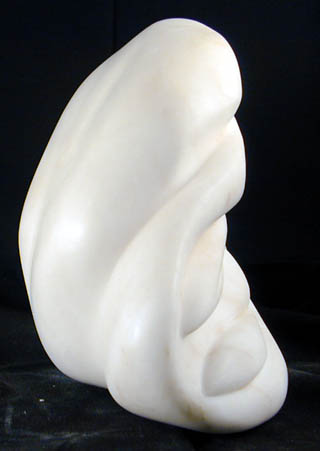
The trick to working with wet/dry sandpaper is working wet. (Keep in mind all of my sanding comments relate to alabaster, chlorite, and pyrophyllite).
To do this I use a large black rubber pan that I purchased from Sculpture House. I The pan is designed for use in mixing plaster. Actually, I believe it is manufactured for use in the barn — pigs, goats, horses, etc. If you hunt in google for “Kanguro bucket” you will find many referencese. All of the references relate to farm/barn and most of them are in the UK. Here is a quote about the Kanguro bucket:
“Kanguro are made from reinforced rubber, they are virtually indestructible ( even for pigs!), and are impervious to frost, sunlight and manure acids. They are the long term answer to all your bucket requirements. 17 litres”
I suppose manure acids aren’t a regular part of sculpting. But it’s nice to know that if there are any the bucket is impervious.
The part number at Sculpture House for the rubble tub I use is C-100 — called Cesta Rubber Bucket. I am gonna order one to make sure it is the same as the ones I bought back in 1986. As you can tell, they last a long long time. The only down-side is that the rubber marks my white alabaster. So to prevent this I use a large cloth (old t-shirt) to line the pan.
So with rubber tub filled (about 1/2) with water and the sculpture partially immersed I am good to go for the wet version of wet/dry sanding.
There are several advantages to this:
- It keeps the dust down (yay!) .
- I achieve a better surface faster.
- The sandpaper lasts much longer.
- It is easier to tell when it is time to switch to the next grade of sandpaper.
On the larger pieces I can’t fit the sculpture in the pan, so I will either run water over the sculpture as I sand or I will have a basin sitting close by and dip into it every few moments to re-wet the sandpaper and rinse the sculpture.


